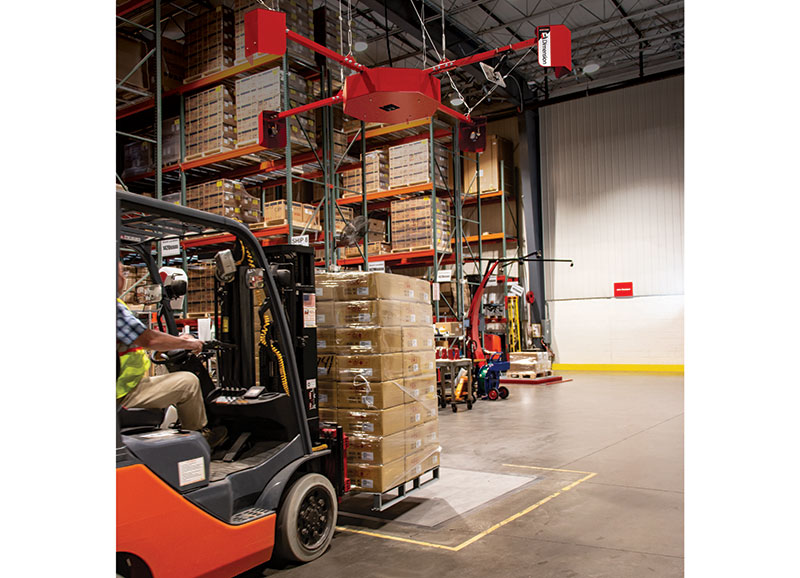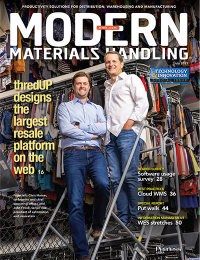New resource center for weighing and dimensioning
Beyond its team of experts, Rice Lake has come up with an online guide to integrate a new cubing and weighing station into your shipping process.
Weighing is just a part of our lives, whether it’s 7 pounds, 3 ounces at birth or that 50-pound bag of cement at Home Depot. The same is true for dimensioning from a 20-inch baby to that 16 x 24 x 42-inch shipping carton.
Or as John Lawn says, weighing and dimensioning are part of our lives more often than we may even realize. And Lawn knows, since he’s Rice Lake’s strategic business unit director of dimensioning.
So, when he went to the ProMat show this spring, Lawn listened carefully to the questions people were asking about weighing and dimensioning. Two stood out.
Many people were focused on integrating robots along with weighing and dimensioning automation to improve process flow.
Many others were focused on the importance of weighing and dimensioning to improve the accuracy of bills of lading for carriers. This requires not just a good process but precision measurement. The ultimate goal, of course, is to become a “shipper of choice” for carriers by providing accurate data and bypassing the need to be reweighed and re-dimensioned because of past discrepancies, says Lawn.
He tells the story of a company that would ship pallets of aluminum parts with less-than-truckload (LTL) carriers. When the pallet loads were reweighed and re-dimensioned by the LTL, they learned that the carrier was more concerned with space than weight. And pallets of aluminum parts were quickly converted by the carrier from weight to volume/density, resulting in invoice corrections and/or reclassification.
In other words, getting both weight and dimensions right in context requires some work. Fortunately, Rice Lake offers a running start for shippers at ricelake.com/dimensioning under the headline “Take Control of Your Shipping with Dimensional Weight.”
The starting point is to understand what dimensional weight is and why it’s important. And while you’re surely focused on your own process, here are two key questions to ask your LTL carrier, too. They are:
- What is the density threshold when you switch from dimensional weight to actual weight?
- Can an automatic dimensioning system improve my rates?
There’s also the matter of your internal processes. Determining the equipment and software you need is just as important as integrating it all with your existing processes, including interactions with robotic equipment. Lawn says that beyond the online Resource Center, Rice Lake’s team of internal experts can be quite helpful in helping to determine if adding an automatic dimensioning system is right for you.
Key words here are repeatable, precise, streamlined and efficient. “The last thing any operation needs is a new step that disrupts the flow of goods and doesn’t produce accurate data for each and every shipment,” says Lawn.
And when it’s done the right way, there’s an additional benefit: an improved relationship with your carrier. “Not everything is about dollars and cents. Accurate data goes a long way to new shipping efficiencies by building trust with your carrier,” adds Lawn

Article Topics
Rice Lake News & Resources
New resource center for weighing and dimensioning Calculate the dimensions of packages, flats, tubes, pallets and more - all in record time! Parcel dimensioning minimizes freight costs for Packers Pro Shop Rice Lake acquires Postea Cubing & Weighing: In the money Online retailer tackles billable weight changes Rice Lake’s European presence grows with purchase of Holland-based Master Engineering More Rice LakeLatest in Materials Handling
Geek+ and System Teknik deploy PopPick solution for pharmacy group Med24.dk Beckhoff USA opens new office in Austin, Texas Manhattan Associates selects TeamViewer as partner for warehouse vision picking ASME Foundation wins grant for technical workforce development The (Not So) Secret Weapons: How Key Cabinets and Asset Management Lockers Are Changing Supply Chain Operations MODEX C-Suite Interview with Harold Vanasse: The perfect blend of automation and sustainability Consultant and industry leader John M. Hill passes on at age 86 More Materials HandlingAbout the Author
Subscribe to Materials Handling Magazine

Find out what the world's most innovative companies are doing to improve productivity in their plants and distribution centers.
Start your FREE subscription today.
April 2024 Modern Materials Handling

Latest Resources












